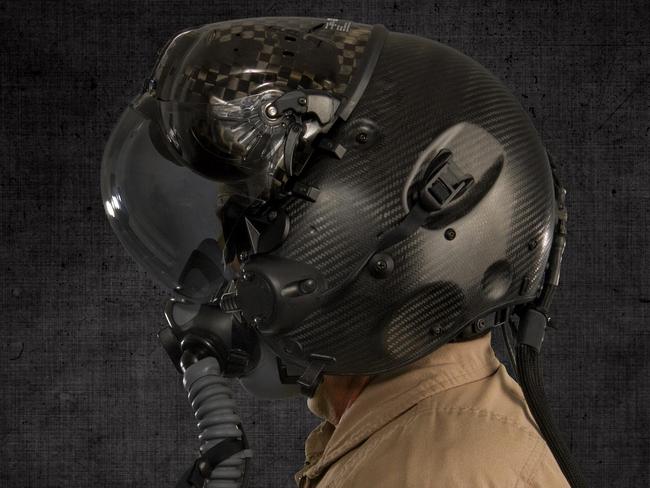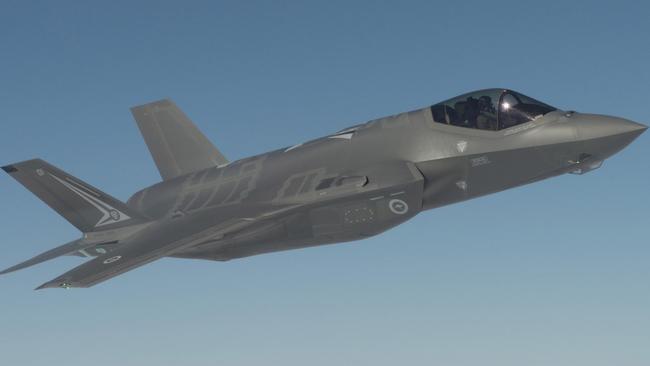US Air Force General wants to upgrade F-35 avionics, engines, payload
NEW engines. New avionics. New radar. That’s the US Air Force shopping list of upgrades for a jet that isn’t even finished yet: The controversial F-35 stealth fighter.
NEW engines. New avionics. New radar. That’s the US Air Force shopping list of upgrades for a jet fighter that isn’t even finished yet: The controversial F-35 stealth fighter.
USAF F-35 development program chief Major General Jeffrey Harrigian told news service Reuters yesterday that he didn’t want the eight-year-late stealth fighter to “rest on its laurels”.
“We are already considering and thinking through what are some of the technologies that will be part of the F-35,” General Harrigian told Reuters.

He highlighted the rapid advancement in the stealth fighter arena among countries like China and Russia as the need for such upgrades.
But it’s not just the US F-35 that is undergoing another capability review: So too is Russia’s new T-50 stealth fighter. It has just had a drastic cut to the number of aircraft on order for production.
DOGFIGHT: Is the much-delayed F-35 already obsolete?
The US General’s statement comes after the release of several reports which highlight ongoing technical and developmental issues with the F-35 strike fighter which was designed in the late 1990s to be “all things for all people”.
#F35 air-to-air combat tests prove there's room to add maneuverability: http://t.co/8EJ6ASLKQi (via @AviationWeek) pic.twitter.com/7vpVzOSaxR
— F-35 Lightning II (@thef35) April 3, 2015General Harrigian did not give great detail on what changes he was seeking for the fifth-generation combat jet, but listed a new avionics (flight control) system, laser weapons and a new fuel-efficient engine as “potential upgrades”.
The US Department of Defence Inspector General last month raised safety issues such as software deficiencies, engine troubles and stability. The Director of Operational Test and Evaluation pointed to ongoing delays in the program’s sophisticated helmet display system and weapons payload development and raised concerns over vulnerability to fire.

Both expressed a desire that all claimed “aircraft capabilities” be independently verified and questioned the lack of an upgrade program for fast-tracked aircraft that have already been completed. Australia took delivery of its first incomplete F-35 in December.
HYPOTHETICAL: Does Australia have what it needs to put up a fight?
Russia’s advanced T-50 stealth fighter is also experiencing second thoughts.
Late last year Russian President Vladimir Putin announced a fast-track program to buy 52 of the large interceptor which has been specifically designed to find, track and destroy stealth aircraft such as the B-2 Spirit bomber, F-22 Raptor and F-35 strike fighter.
#F35 pilot @billieflynn details what it's like to see 360Ëš of sky: http://t.co/2R38KbOPAK (Via @washingtonpost) pic.twitter.com/oFeSIbmrjy
— F-35 Lightning II (@thef35) April 2, 2015Late last month Russian deputy defence minister Yuri Borisov told local media the number of T-50s on order had been cut to 12.
Like the F-35, one of the T-50 prototypes suffered a serious engine fire last year in a setback to its prototype test program. T-50 development partner India also appears to have now abandoned its contribution to the project.

Combined with Russia’s sanctions-induced recession, defence analysts say such a dramatic cutback may place the project in jeopardy.
Russia had expected to first operational examples of the angular fighter jet to be ready by 2016.
Despite its limitations, the first operational squadron of the F-35 is due to begin flying with the US Marine Corp later this year.
General Harrigian said he expected the new stealth fighter, which includes three variants for use by the air force, navy and marines, to be fully operational by 2022.




